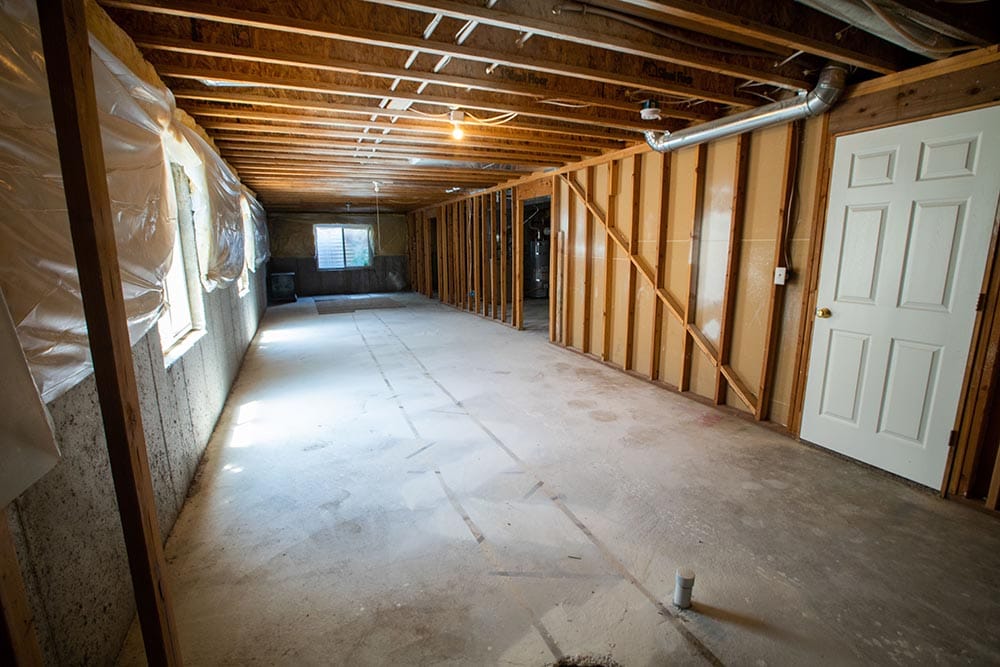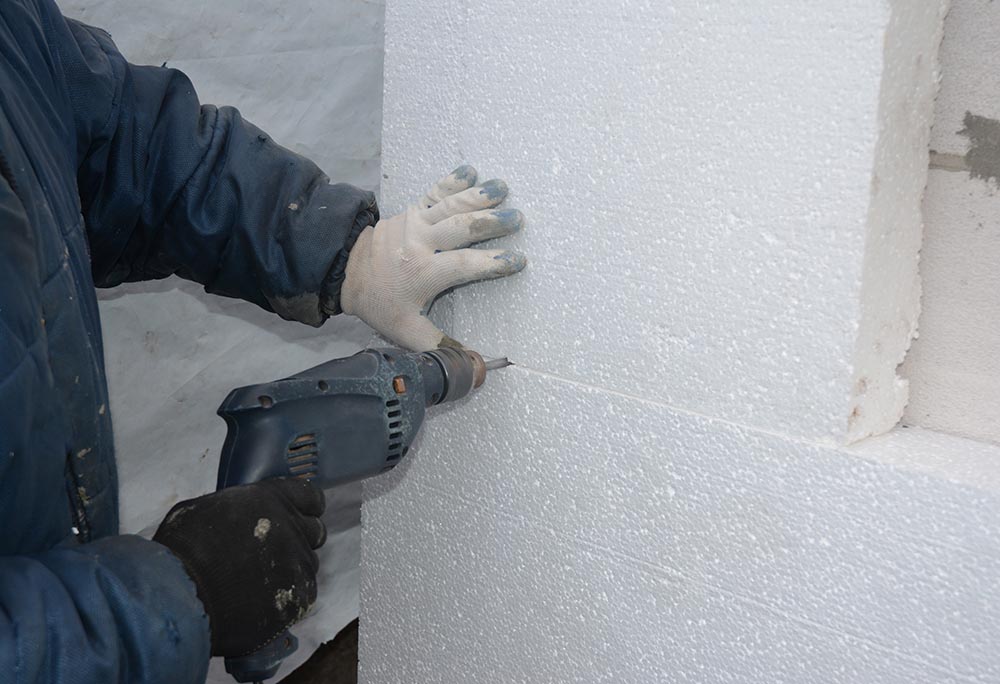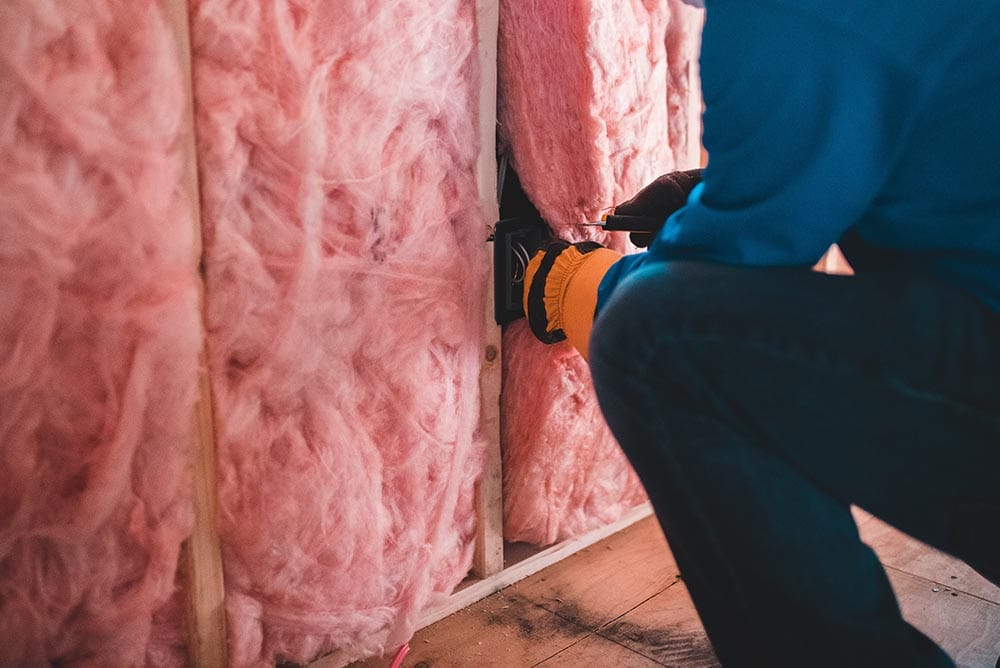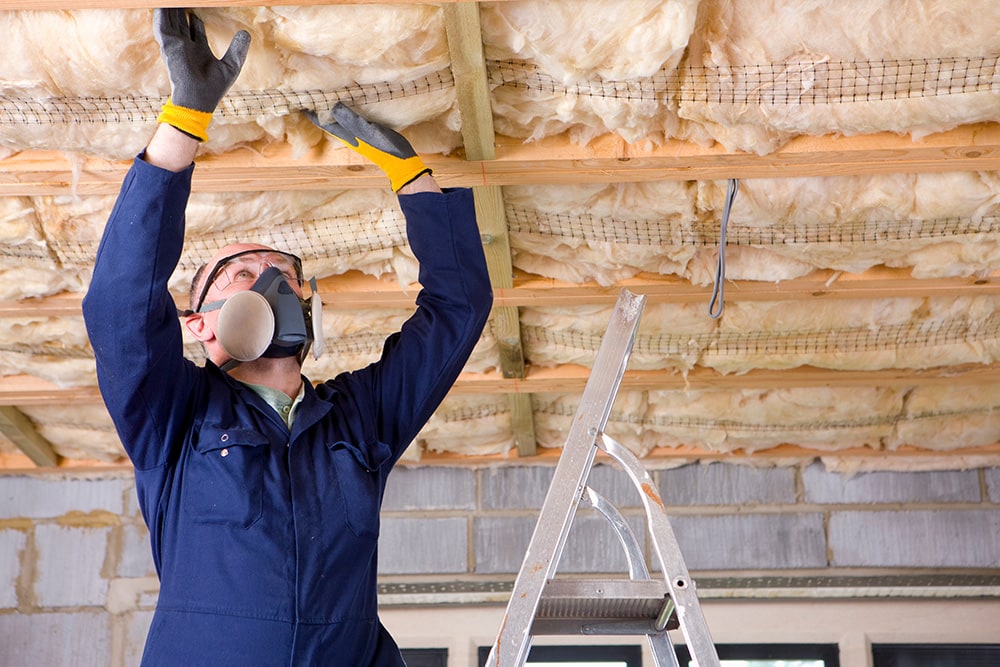2 Types of Insulation for Basement Walls: Facts & FAQ (With Pictures)
-
- Last updated:

Finishing a basement is one of the most fulfilling projects you can complete as a homeowner. With a few painted drywall panels and some flooring, you can completely transform the appeal of your home. You suddenly gain an extra bedroom, a hangout pad away from the kids, or a game room the whole family can enjoy, not to mention a nice bump in your house’s resale value.
The insulation is the most critical component of a basement overhaul and arguably the most complex. Basements tend to accrue moisture more so than any area of the home. Your insulation is an essential line of defense against the moisture and the mold growth that follows it, and unfortunately, many popular types of insulation won’t work for those purposes.
Proper insulation is crucial to preserve your health and the investment you made in your brand new finished space. To help you start planning the remodel, we’ll detail the two types of insulation to consider for your basement walls.

The 2 Types of Insulation for Basement Walls
1. Sprayed Foam

| Cost: | $0.90–$2.50 per square foot |
Spray foam is polyurethane insulation that expands by about an inch when you apply it. It solidifies to create a continuous airtight seal.
Since it goes on like a liquid, spray foam can perfectly conform to any shape, allowing you to fill awkward crevices and seal around fixtures like plumbing pipes. It’s a practical insulating option if you already have your framing in place because it can seep between the wall and studs to close any open gaps.
Closed-cell spray foam forms a dense airtight layer with a high R-value of around 6.0–7.0 per inch of thickness, about twice as insulating as styrofoam batt. It’s the best choice if you want to prevent moisture and air infiltration that can contribute to mold growth and structural breakdown.
- Creates an excellent air and moisture seal
- High R-value offers superior resistance to heat transfer
- Provides an exceptional sound barrier
- Fills awkward cracks, gaps, and crevices
- High upfront costs
- Often requires professional installation
- Can be difficult to remove from surfaces
2. Rigid Foam Board

| Cost: | $0.25–$1.40 per square foot |
Rigid foam insulation is a lightweight board made of polystyrene, polyurethane, or polyisocyanurate materials. These boards are easy to score and manipulate with a utility knife, making them ideal for DIY installation. Because they don’t fill gaps like spray foam can, foam boards are best for flat masonry or concrete walls.
Foam board typically goes in a continuous sheet against the wall before you build the wood framing. Boards come in convenient sizes (usually 4’x8’) to facilitate a fast setup. Panels are available in thicknesses between ½” and 2” to supply R-values between 2.0 and 10.0 per inch of thickness, allowing you to install the proper profile for your climate zone.
Unlike spray insulation, foam boards need extra help to keep moisture and air out. Foam boards have varying levels of water resistance, and many include a vapor barrier on one side. But while the foam board may prevent moisture migration, seams between panels and gaps around fixtures leave openings for moisture to intrude.
You can use house wrap tape to seal joints between panels. Holes in the wall, gaps around studs, and other awkward spaces will need low-expanding spray foam or lines of caulk to seal off.
- Less expensive than spray foam insulation
- Easy to cut, shape, and install on basement walls
- Prevents air and moisture transfer
- Available in various thicknesses to ensure proper insulation
- Not as insulating as spray foam
- Easy for air gaps to open
- May lose thermal resistance over time

Can You Use Fiberglass or Mineral Wool Insulation for Basements?

Most people are familiar with the pink cotton candy-like rolls of fiberglass insulation. Fiberglass is a popular option for above-grade insulation due to its low cost and easy installation. It doesn’t offer the most impressive insulation (around 2.5–3.5 per inch of thickness), but it has excellent fire resistance and is able to withstand temperatures over 1,000°F.
With a texture similar to fiberglass, mineral wool consists of stone and slag that are melted, spun into fibers, and then packed tightly together to form thick mats. With R-values starting around 3.0 per inch of thickness, mineral wool is marginally more insulating than fiberglass, but its fire and moisture resistance are distinctly advantageous.
In a basement, mold and mildew are a constant concern. Although fiberglass is inorganic, it can capture moisture and organic particles that allow mold to grow. Once it’s full of water, fiberglass’s insulating ability plummets. By contrast, mineral wool will reject moisture, making it less likely to become soggy and moldy.
Mineral wool’s water resistance may sound ideal in a damp basement, but it shouldn’t be a single solution below grade. Despite not holding moisture, it allows vapor to pass like fiberglass batt. Even while it isn’t collecting mold, the mineral wool can let water through to your framing and the drywall, which can then begin to grow mold and break down.
Putting mineral wool against a bare basement wall is generally only practical if it isn’t soil-facing and you don’t have significant moisture issues. But you may still be able to use mineral wool to supplement foam insulation in other basement situations.
With a foam board backing, you can use mineral wool’s added thermal resistance and sound-dampening abilities by installing it between the studs of your basement wall frame.
Find an insulation specialist in your area, and get free, no-commitment estimates for your project.Consult an insulation expert

What Are the Different Types of Rigid Foam Insulation?
Rigid foam boards come in varying designs, quality levels, and costs, with some working better for below-grade applications than others. The three types of rigid foam boards are expanded polystyrene (EPS), extruded polystyrene (XPS), and polyisocyanurate.
Expanded Polystyrene (EPS)
Expanded polystyrene is the most economical of the foam board options. It doesn’t retain water over the long term or lose its thermal resistance. The key drawback of EPS is its relatively low R-value of around 3.6–4.6 per inch of thickness.
Extruded Polystyrene (XPS)
Extruded polystyrene foam insulation is the most identifiable, thanks to its blue, pink, or green coloration. It’s also the most common foam board in residential applications. With an R-value of 4.5–5.0 per inch of thickness, it provides better thermal resistance while remaining low-priced and easy to use.
Like EPS, XPS can come bare or with various facings to help with vapor resistance and heat deflection. It’s more moisture-resistant than EPS, but it does tend to off-gas and loses its R-value over time.
Polyisocyanurate
Polyisocyanurate, or polyiso, is the densest foam board product, offering R-values of 6.0–8.0 per inch of thickness. At roughly $0.70 per square foot, it’s also much more expensive than XPS or EPS alternatives. It’s common to see it with foil facing that serves a dual purpose of reflecting heat and limiting off-gassing. Polyiso loses its insulating ability as the temperature decreases, so it’s not ideal in colder regions.

Buyer’s Guide: Choosing the Best Basement Insulation

Insulating your basement can substantially impact your energy consumption and utility bills. To find the appropriate type of insulation, you’ll need to consider where you live and the layout of your basement.
Your basement wall structure will determine which insulation options you can use. Foam boards attach to surfaces via masonry screws or adhesive. As a result, it needs a flat surface to hold in place and prevent moisture penetration, meaning it can only work effectively on concrete or masonry walls.
Spray foam works on any basement wall, whether it’s smooth like concrete and masonry or convoluted like stone. And even if you have flat walls, spray foam will still be the best option from a convenience standpoint if you have to deal with odd dimensions, multiple angles, and various hard-to-reach spots.
Aside from the type of insulation you choose, there’s also the thickness to consider. Based on which region you fall within the climate zone map, you’ll need a specific R-value for your basement insulation.
Local building codes typically detail the insulation requirements for your area. The minimum allowable R-value goes up as you head further north. For instance, climate zone 6 requires an R-value of 15.0, while climate zone 3 only requires an R-value of 5.0 or greater.

Conclusion
Spray foam insulation is the best insulation option for basements. It prevents moisture infiltration by creating a continuous shield across the basement wall, and it can fill those challenging cracks, gaps, and cavities that rigid foam can’t insulate.
If you have an uncomplicated layout and concrete or masonry walls, foam boards make for a simple DIY installation that avoids the hazardous VOCs of spray foam. With the material cost difference and the savings you’ll see from installing it yourself, you may save several hundreds of dollars with rigid foam. No matter which option you choose, always refer to your local building codes to ensure your insulation is safe and effective.
See also: 8 Best Paints for Basement Walls: Reviews & Top Picks
Featured Image Credit: Real Twin Photos, Unsplash
Contents

